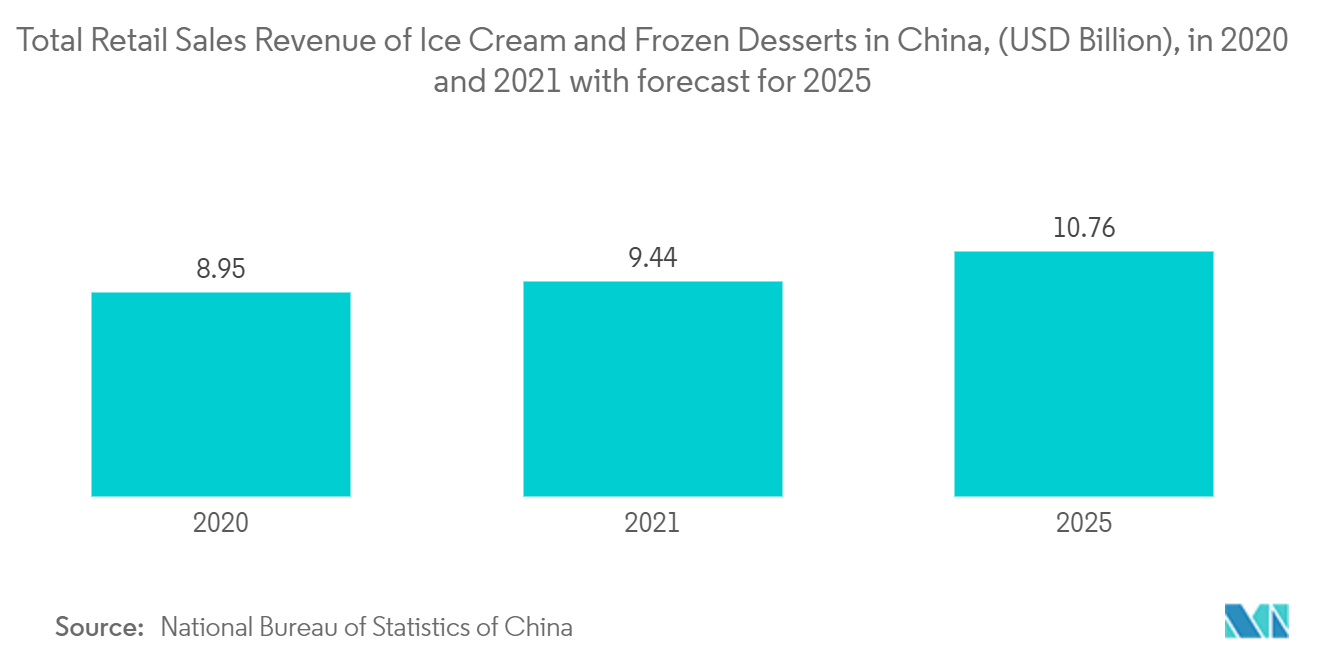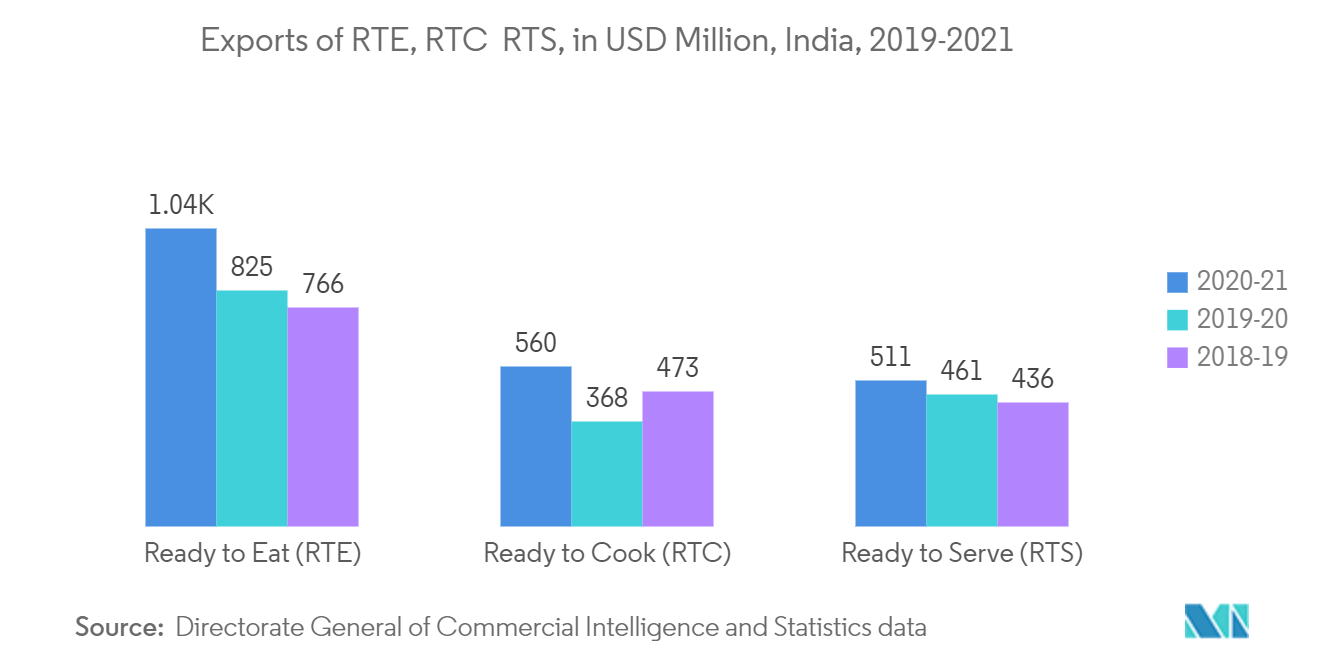Market Trends of APAC Frozen Food Packaging Industry
This section covers the major market trends shaping the APAC Frozen Food Packaging Market according to our research experts:
Increase in Disposable Income and Changing Consumer Behaviour
- The demand for the market gets influenced by numerous factors, such as changing lifestyles, increasing disposable income, and rapid urbanization in developing countries, especially the growing middle-income population, which are increasing the demand for bags for frozen food. Population density has increased demand for packaged food, with Millenials contributing to the growth.
- After packaging, it takes time for packaged food to reach consumers across various parts of the world. The packaged food may not be fresh and might lose its aroma and taste before reaching the consumer. The threat of food getting spoilt before going to the consumer is increasing, as it would result in a loss of the capital invested in the packaging. To overcome this, food processing industries are investing in technologies and various new packaging techniques, such as intelligent packaging and engineering science, which help to increase the product's shelf life. It is the reason for the industry's increased demand for frozen food. Organizations are focusing on consumer satisfaction, apart from revenues, as it impacts the image and value in the market.
- Developing markets in India and China are experiencing high demand for packaged and frozen food due to increased per capita income and spending. The need for frozen food is also influenced by changing behavior and lifestyle of the customers.
- The convenience of local retail establishments has expanded, contributing to the demand for frozen food. In recent years, the demand from merchants has grown dramatically. For instance, the online fresh grocery store MissFresh expanded into 30 to 35 cities during the next five years, following its most recent opening in the eastern Chinese city of Ningbo, in September 2021. The company's strategy is to maintain and expand its distributed mini-warehouse model (DMW) network, which is now accessible in 17 first- and second-tier Chinese cities, including Beijing, Shanghai, Guangzhou, Shenzhen, and Hangzhou. The products provided are fresh produce such as fruits, vegetables, fish, dairy, drinks, frozen and packaged meals, and FMCG items.
- Also, according to the National Bureau of Statistics China, the sales value of ice cream and frozen desserts in China is projected to increase from USD 8.95 billion in 2020 to USD 10.76 billion in 2025. The growth in the value state that the demand for frozen food is projected to increase, eventually fueling the development of the studied market.

India to Grow at Significant Rate during Forecast Period
- In the past ten years, the export of final consumer food items from India, such as Ready to Eat (RTE), Ready to Cook (RTC), and Ready to Serve (RTS) products, has increased significantly. Food products falling under the RTE category have seen a Compound Annual Growth Rate (CAGR) of 12% over the past ten years. The share of RTE in Agricultural and Processed Food Products Export (APEDA) exports has increased from 2.1% to 5% over the same period, thanks to the Ministry of Commerce & Industry's emphasis on the value addition of products for export. (Source: Ministry of Commerce & Industry, India)
- Owing to the enticing fiscal incentives, supportive economic policies, and encouraging growth in the food retail sector, India's food ecosystem presents enormous investment prospects. The Government of India (GoI) is taking all necessary measures to increase investments in the food processing sector in India through the Ministry of Food Processing Industries (MoFPI). The government of India has allocated INR 4600 crores (USD 55.71 Billion) to the umbrella PMKSY plan through March 2026. The allotment will boost the demand for frozen food packaging.
- According to the Ministry of Food Processing Industries (MoFPI), the Indian food processing market will reach USD 470 billion by 2025. In the upcoming years, Tier-II and Tier-III cities may adopt the trend already seen in metropolitan areas by consuming more processed and frozen food, Thus, fueling the growth of frozen food packaging .
- India produces 7.96% of the world's fish, making it the third-largest producing country in the world with the total fish production for FY 20-21 at 14.73 MMT, compared to
- India is the third-largest fish-producing country in the world and accounts for 7.96 percent of global production. The total fish production during the financial year 2020-2021 was estimated at 13.69 million metric tons (MMT). Despite the industry's significant challenges in 2021-22, India still exported seafood worth Rs 57,586.48 crore (USD 7.76 billion). Compared to 2020-21, it saw a growth increase of 30%. The top 3 countries India prefers to export its marine products to are the USA, China, and Japan. 63% of exports were sent to these three nations, according to Invest India. These factors significantly contribute to the market growth rate during the forecast period.

